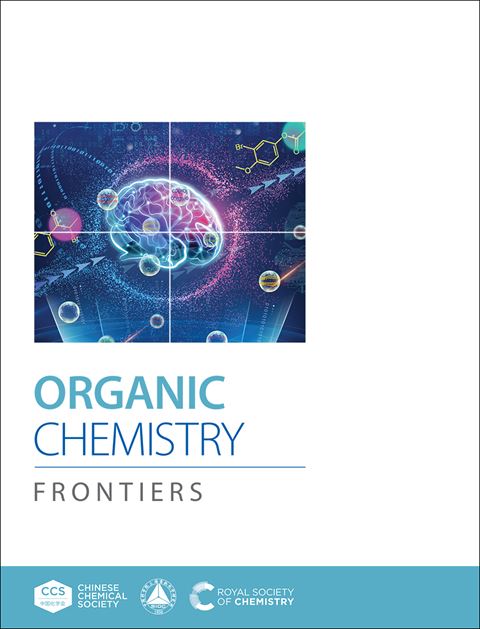Inorganic Reagents in photochemical Reactions
IF 4.6
1区 化学
Q1 CHEMISTRY, ORGANIC
引用次数: 0
Abstract
Inorganic reagents are safe, low-cost, easy to store, and easy to remove after a reaction. These properties make them attractive for direct use in organic synthesis. Inorganic reagents can serve as radical initiators, H/D sources, nucleophiles, radical precursors, C1 synthons, S sources and oxidizing agents in organic photochemical reactions under mild and environmentally friendly conditions. Key inorganic reagents discussed include HCO2Na/K, NaH2PO2, CF3SO2Na, HCF2SO2Na, RSO2Na, EtO2CCO2K, CO, CO2, NH3, NH4OAc, NaN3, Cu(NO3)2, H2O, D2O, O2 (or air), AgSCF3, MSCN/MSeCN (M=Na, K, NH4), K2S, S8, Se, Na2S2O5, K2S2O5, NaCl, KCl, MgCl2, KBr and KHF2. This review highlights the benefits of combining inorganic reagents with organic photochemical reactions, such as low cost, safety, and simplicity, in line with green chemistry principles.光化学反应中的无机试剂
无机试剂安全,成本低,易于储存,反应后易于去除。这些性质使它们具有直接用于有机合成的吸引力。无机试剂可以作为自由基引发剂、H/D源、亲核试剂、自由基前体、C1合成子、S源和氧化剂,在温和、环保的条件下进行有机光化学反应。讨论的主要无机试剂包括HCO2Na/K、NaH2PO2、CF3SO2Na、HCF2SO2Na、RSO2Na、eto2co2k、CO、CO2、NH3、NH4OAc、NaN3、Cu(NO3)2、H2O、D2O、O2(或空气)、AgSCF3、MSCN/MSeCN (M=Na、K、NH4)、K2S、S8、Se、Na2S2O5、K2S2O5、NaCl、KCl、MgCl2、KBr和KHF2。本文综述了无机试剂与有机光化学反应相结合的优点,如低成本、安全、简单,符合绿色化学原则。
本文章由计算机程序翻译,如有差异,请以英文原文为准。
求助全文
约1分钟内获得全文
求助全文
来源期刊

Organic Chemistry Frontiers
CHEMISTRY, ORGANIC-
CiteScore
7.90
自引率
11.10%
发文量
686
审稿时长
1 months
期刊介绍:
Organic Chemistry Frontiers is an esteemed journal that publishes high-quality research across the field of organic chemistry. It places a significant emphasis on studies that contribute substantially to the field by introducing new or significantly improved protocols and methodologies. The journal covers a wide array of topics which include, but are not limited to, organic synthesis, the development of synthetic methodologies, catalysis, natural products, functional organic materials, supramolecular and macromolecular chemistry, as well as physical and computational organic chemistry.
 求助内容:
求助内容: 应助结果提醒方式:
应助结果提醒方式:


